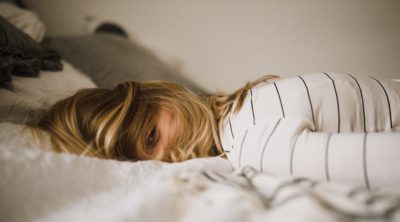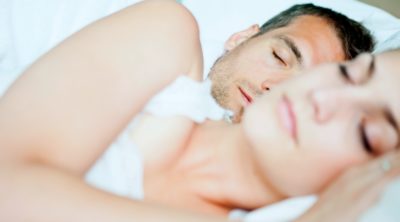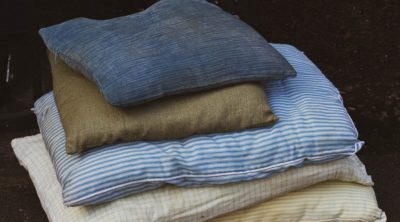
CPAP masks are often recommended for individuals affected by sleep apnea, which is a disorder that is characterized by periods of shallow breathing and/or pauses in breathing during sleep. This SleepHearty article provides tips on buying CPAP masks for side sleepers.
Side sleepers should look for a small-sized CPAP mask that covers a small area of the face. Such masks are less likely to move out of position during sleep. The whole purpose of using the mask would be defeated, if air leaks through the mask.
Positive airway pressure ventilation methods are often recommended for individuals affected by breathing problems. CPAP stands for Continuous Positive Airway Pressure. The first CPAP device was developed by Professor Colin Sullivan at the Sleep Clinic of the Royal Prince Alfred Hospital in Sydney, Australia. Since then, this technology has been widely used for the treatment of obstructed sleep apnea and other sleep-related disorders.
These masks are commonly used in hospitals for patients affected by medical conditions such as sleep apnea, acute type 1 and 2 respiratory failure, congestive heart failure, chronic obstructive pulmonary disease, etc. At times, these masks are used for dealing with breathing problems in patients affected by hypoxia and community-acquired pneumonia.
Individuals affected by this condition can benefit from the use of a CPAP mask. The equipment includes an air pump, mask, and a tube that links the air pump to the mask. Basically, the air pump has the function of pressurizing the air from the room. The pressurized air passes through the tube to reach the mask. Thereafter, the air moves from the mask into the throat. The air prevents the blockage of the airway, and keeps the throat open during sleep. The CPAP therapy works well, provided the mask fits you comfortably. Several types of masks are readily available. These include:
➠ Nasal mask
➠ Full face mask
➠ Nasal pillow mask
➠ Nasal prong mask
➠ Hybrid mask
➠ Oral mask
➠ Total face mask
A full face mask covers the nose and the mouth, and is held in place with a headgear. It is bulkier than a nasal pillow mask. If a person is affected by a condition due to which he/she cannot use a nasal mask or a full face mask, there’s the option of using a total face mask. This type of mask is recommended for individuals who leak air through the corners of their eyes on receiving CPAP pressure.
An oral mask is recommended for individuals who are often affected by nasal congestion. Hybrid masks are less bulkier than full face masks. A nasal prong mask delivers pressurized air inside the nostrils, and is kept in place by the headgear that is worn on the crown.
➠ Discomfort while sleeping
➠ Excessive dreaming during early use
➠ Dry mouth
➠ Dry nose
➠ Sore throat
➠ Headache in case of masks that have a headgear
➠ Nasal congestion
➠ Runny nose
➠ Sneezing
➠ Irritated skin and eyes
➠ Abdominal bloating
➠ Nosebleeds (in rare cases)
Also, CPAP masks that do not allow free movement of air could make the task of exhaling air very unpleasant. It is extremely essential to ensure that the mask fits properly. If it doesn’t, air would leak around the mask.
Nasal pillows are considered to be one of the best options for side sleepers. In order to avoid discomfort, a hose lift can also be used to keep the tube out of the way while one is asleep. In case of nasal interface (pillow style) masks, the pressurized air is delivered directly into the nostrils. In the absence of mask parts covering the bridge of the nose or mouth, side sleepers can sleep comfortably. Also, the nasal pillows are less likely to leave behind marks on the face.
These masks are light and small, when compared to the full face or total face masks. Also, air leakage is minimal, as air directly flows into the nasal passages. Users who have a habit of reading a little before bedtime will prefer these masks, as these don’t obstruct the vision. You can also wear spectacles, as the bridge of the nose is not covered by the mask.
Though these masks are comfortable, these are not recommended in cases where air has to be delivered at a higher pressure. This is mainly due to the fact that the air directly flows into nasal passages. In such cases, a nasal CPAP mask would be a better option. These triangular-shaped masks cover the area from the bridge of the nose to the upper lip. The airflow seems more natural, and the pressure is not as direct as in case of the nasal pillow masks. This type of mask is better-suited for higher-pressure settings than nasal pillows. Also, the mask is quite secure. However, this mask is not apt for people who are often affected by nasal congestion, or those who breathe through their mouth.
Some of the popular nasal pillows and nasal CPAP masks for side sleepers are listed below:
☛ ResMed Swift™ FX, ResMed Airfit P10, and ResMed Swift™ LT nasal pillows have received good reviews. The Swift FX is small, and covers as little of the face as possible. It’s easy to use and offers maximum comfort. ResMed Swift™ LT is also light and comfortable. ResMed Airfit P10 has a split-strap headgear design with minimal facial contact. Also, ResMed offers nasal pillow masks that are specially designed for women.
☛ Nuance & Nuance Pro Nasal Pillow covers only the nares or nostrils, and delivers air directly to the nasal cavity. It is light, and has a flexible short tube. The tube can be moved up, over the top of the head, so that it is kept out of the way when one is asleep.
☛ SleepWeaver Advance Soft Cloth CPAP Mask is a nasal mask that is made from a soft, breathable cloth. It inflates when the CPAP machine is turn on, thereby creating a secure seal. It is less likely to cause skin problems. It is flexible, and can be used for both low and higher pressure settings.
On a concluding note, most users are likely to feel some discomfort when they start wearing a CPAP mask. However, it usually takes a little time to get used to the mask. If you are side sleeper, you could use a nasal pillow. Such a mask works well for side sleepers due to its small size and minimal weight. Also, using a special pillow that minimizes contact between the mask and the pillow would prove beneficial.
Disclaimer:
The information provided in this article is solely for educating the reader. It is not intended to be a substitute for the advice of a medical expert.


